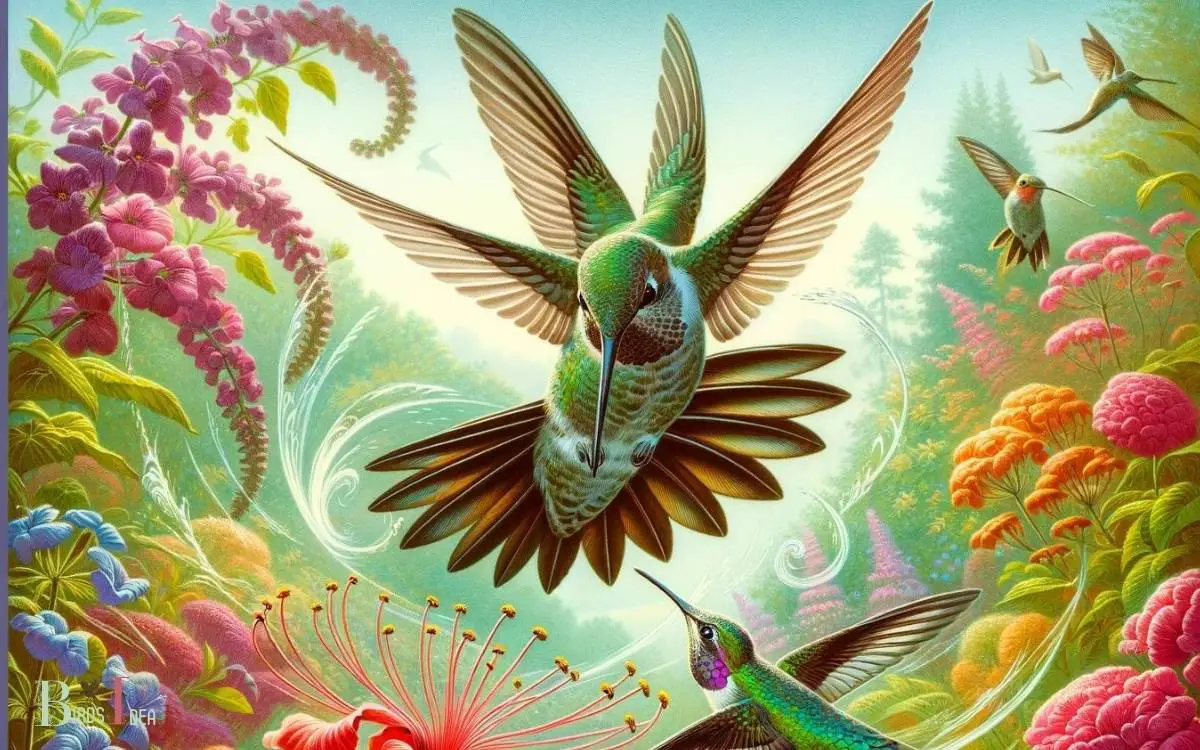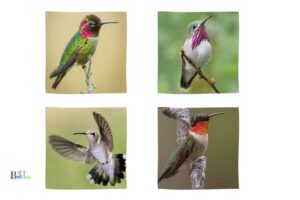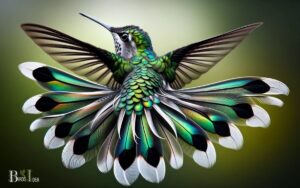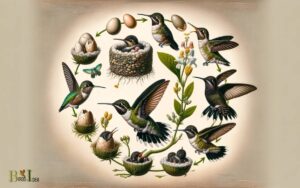Anna’s Hummingbird Courtship Display: Agility and Beauty!
Anna’s Hummingbird (Calypte anna) performs a complex courtship display to attract mates, showcasing its agility and beauty.
The male’s intricate aerial performance, paired with vibrant feather colors and unique tail feather sounds, plays a pivotal role in mating success.
The courtship behavior of Anna’s Hummingbird involves several key elements:
This behavior not only demonstrates the male’s physical capabilities but also his genetic quality and health.
The aerial acrobatics of Anna’s Hummingbird during courtship highlight the species’ unique mating rituals.

Key Takeaway
4 Stage of Anna’s Hummingbird Courtship Display
| Stage of Display | Description | Purpose |
|---|---|---|
| Dive Display | High-speed dive with tail feather sound | To showcase aerial prowess |
| Shuttle Display | Side-to-side flight in front of the female | To display iridescent feathers |
| Sound Production | Chirps and tail feather noises | To communicate fitness |
| Visual Appeal | Use of vibrant plumage | To attract female attention |
Anatomy of Courtship Display
Anatomy of the courtship display is a key aspect of understanding the mating behavior of Anna’s hummingbirds.
During courtship, the male Anna’s hummingbird performs a series of intricate aerial displays to attract a female mate.
These displays involve precise movements of the wings and body, accompanied by distinctive vocalizations.
The male ascends to great heights, then rapidly descends in a pendulum-like motion, producing a high-pitched sound with its tail feathers.
The anatomy of these displays is finely tuned to convey specific messages to potential mates, such as signaling fitness, health, and genetic quality.
Understanding the precise motions and vocalizations involved in these displays provides valuable insights into the complex mating behaviors of Anna’s hummingbirds, shedding light on their evolutionary adaptations and reproductive strategies.
The Role of Iridescent Feathers
The courtship display of Anna’s hummingbirds is further enhanced by the role of their iridescent feathers, which play a crucial part in attracting potential mates and conveying genetic fitness.
The iridescent feathers of male Anna’s hummingbirds create vibrant, shifting colors when reflecting light due to the microscopic platelets within the feathers.
These colors signal genetic fitness and serve as a key indicator of the male’s ability to invest energy in maintaining such ornate plumage.
Female hummingbirds have been observed to show a preference for males with more iridescent and vibrant feathers during courtship displays, suggesting that the iridescence serves as a visual cue for mate selection.
Additionally, the iridescent feathers may also play a role in species recognition and communication during courtship rituals, contributing to the overall success of the mating process.
Whistling Tail Feathers
During courtship displays, the role of iridescent feathers transitions into the significance of the whistling tail feathers, which contribute to the intricate communication and signaling process between male and female Anna’s hummingbirds.
The male Anna’s hummingbird produces a high-pitched, distinctive sound by rapidly spreading and closing his tail feathers during flight.
This behavior serves as a crucial element in the courtship rituals of Anna’s hummingbirds, enhancing the male’s ability to attract a mate through auditory stimulation.
The whistling tail feathers also play a vital role in establishing the male’s territory and warding off potential rivals.
Additionally, the unique whistling sound created by the tail feathers serves as a form of acoustic communication, allowing the male to convey his fitness and vigor to potential mates.
This fascinating aspect of Anna’s hummingbird courtship leads to further insights into their behavioral patterns in the mating season.
Behavioral Patterns in Mating Season
In the mating season, Anna’s hummingbirds exhibit distinct behavioral patterns that are essential for courtship and reproduction.
Males perform elaborate aerial displays to attract females, involving rapid dives and steep arcs while producing loud whistling sounds with their tail feathers.
These displays not only demonstrate the male’s physical prowess but also serve as a means of establishing territory and warding off other males.
Females, on the other hand, carefully evaluate the displays and select the most impressive males for mating.
Once a pair has bonded, the female takes on the primary responsibility of building the nest and rearing the young.
Understanding these behavioral patterns is crucial for comprehending the intricacies of Anna’s hummingbird mating rituals and their significance for population dynamics and conservation efforts.
Conservation Importance
Amidst the intricate courtship displays of Anna’s hummingbirds, the conservation importance becomes evident through the species’ role in maintaining ecosystem balance and biodiversity.
The significance of conserving Anna’s hummingbirds extends beyond their aesthetic appeal, encompassing broader ecological implications.
The conservation importance of Anna’s hummingbirds is underscored by:
- Pollination: Anna’s hummingbirds play a crucial role in pollinating a variety of flowers, including many native plants. Their foraging behavior facilitates the reproduction of numerous plant species, contributing to the overall health and diversity of ecosystems.
- Indicator species: Their presence, abundance, and behavior can serve as indicators of environmental health, aiding in the assessment of habitat quality and ecosystem integrity.
- Genetic diversity: Protecting Anna’s hummingbird populations helps preserve genetic diversity within the species, which is essential for their long-term survival and adaptability to changing environmental conditions.
Conclusion
The courtship display of Anna’s hummingbird is a complex and intricately designed behavior, involving the use of iridescent feathers and whistling tail feathers to attract a mate.
The behavioral patterns observed during mating season are essential for the continuation of the species, highlighting the importance of conservation efforts to protect these unique and beautiful birds.
As we delve deeper into the fascinating world of hummingbird courtship, we uncover the remarkable adaptations and behaviors that contribute to their survival.






